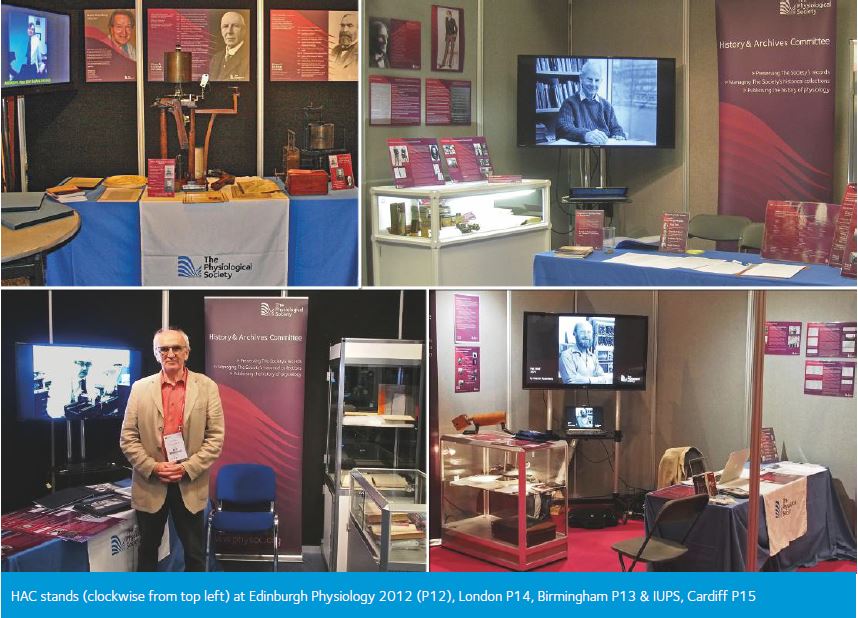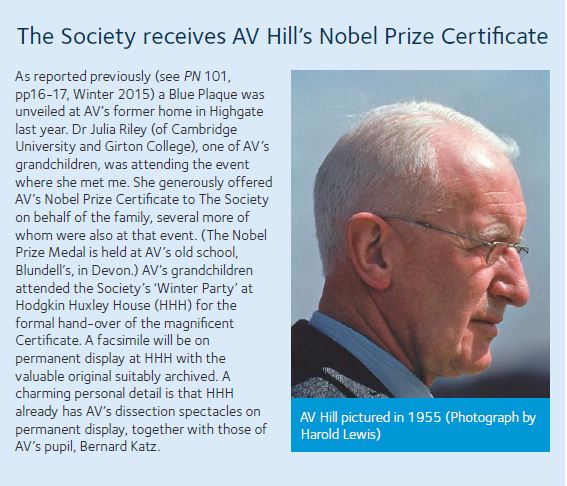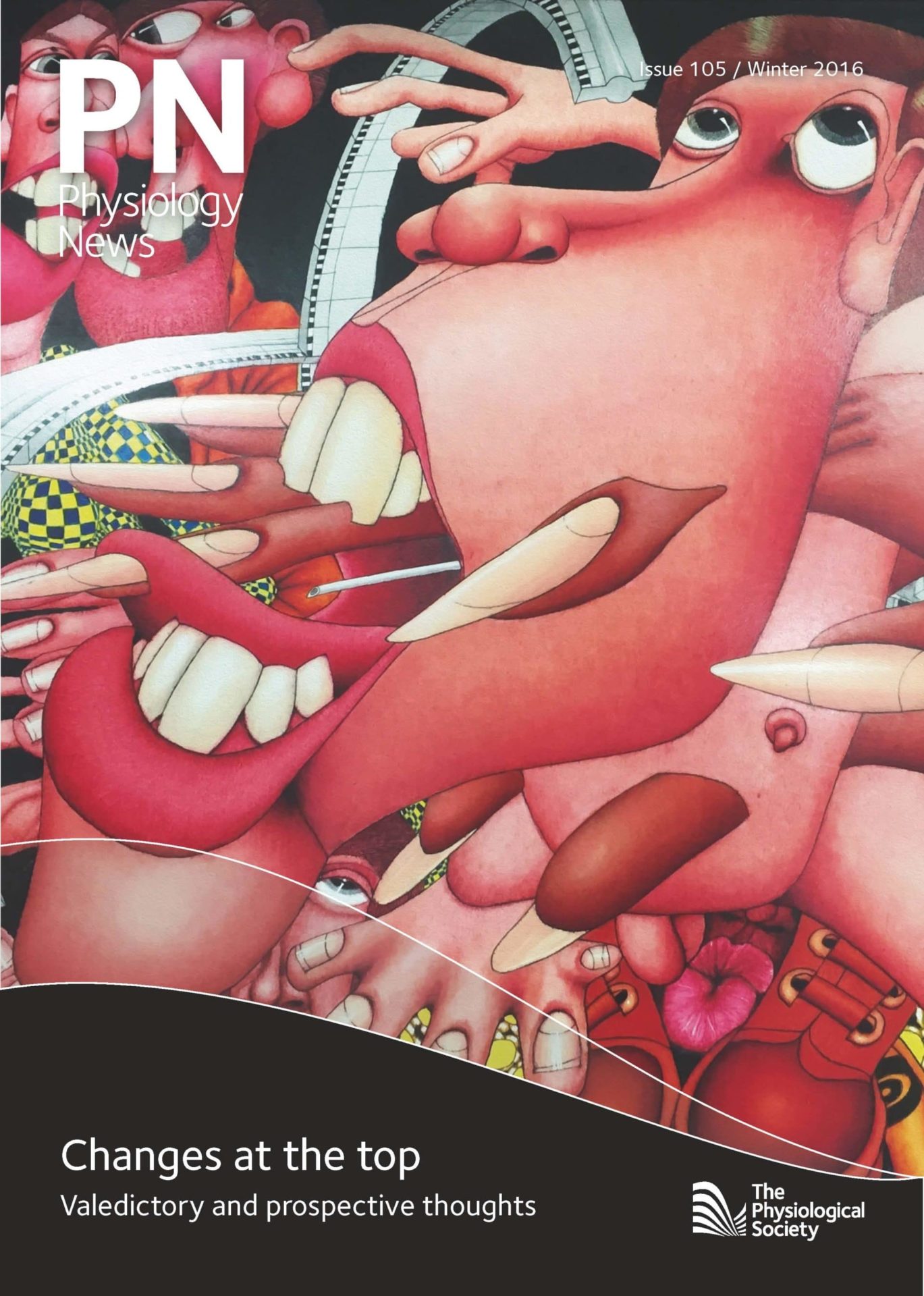
Physiology News Magazine
Valedictory thoughts on the History & Archives Committee
News and Views
Valedictory thoughts on the History & Archives Committee
News and Views
David Miller
Former Chair, History & Archives Committee
https://doi.org/10.36866/pn.105.12

In August, I finished a four-year stint as Chairman of The Society’s History & Archives Committee (HAC) and the Editor asked me to offer some thoughts on my time.
I first joined HAC in 2006. It had recently been revived by Dafydd Walters. DW, the Committee Secretary from 2002 to 2004, was keen to re-establish a wider appreciation of the people and ideas that characterise both The Society and the discipline we serve. In 2012 I succeeded Dafydd as HAC Chair. The main planks of HAC’s work have continued to be: promoting interest in all aspects of the history of physiology, managing the Paton Fund for Historical Studies (physoc.org/paton-prize-bursary) and overseeing The Society’s archival collection (see: archives.wellcome.ac.uk [use the Reference SA/PHY under the ‘Archives & Manuscripts’ tab for a comprehensive listing]). HAC also administers the Paton Lecture (jointly with the Experimental Physiology Board – see www.physoc.org/sites/default/files/page/Lectures%20and%20Prizes%20to%202015_3.pdf) and runs an Oral History programme where senior members are interviewed in an informal manner (physoc.org/oral-history-transcripts). HAC encourages the submission of short articles, notes and pictures for Physiology News. In a more sombre role, we try to ensure that death notices and, where possible, obituaries of deceased members are made available in Physiology News and/or on the website.
In an earlier article in Physiology News (PN 90, Spring 2013, p13), I tried to encapsulate our role thus: ‘From the earliest days, the Society has sustained an interest in its own history. This includes how and why the Society was founded, the background to our owning The Journal of Physiology and Experimental Physiology, how we ran and run our scientific meetings, the forging of our international membership and collaborations. These aspects often entwine with the careers and collaborations of prominent personalities amongst the membership. Furthermore, as with any organisation, there are more formal elements to the archiving of paperwork and records. An abiding interest is to clarify how the intellectual discipline of physiology can be understood better through knowledge of these historical strands.’
At The Society’s annual meeting, the HAC stand affords an excellent way to meet members and to increase awareness of, and contributions to, HAC’s work. It has proved a valuable opportunity to meet members and gain new insights from them. I have also used the chance to photograph quite a number of you – my vain attempt to add to the work of the late Martin Rosenberg who, for many years and with great distinction, was photographer to The Society.
In 2014, I launched the free-access, web-based Physiology Family Tree (hosted at academictree.org/physiology). This provides a dynamic, user friendly way that each of us can locate ourselves in the tangle of roots and branches that helps to describe our science. A strict genealogy based on the near-parental, supervisor-research student relationship is not reliably adhered to in the entries. However, the intellectual and practical links between physiologists and to cognate disciplines becomes very evident. (I have been amazed how relatively few colleagues are aware of, never mind familiar with, their own scientific ‘grandparents’ and thus the thinking and technologies that will have helped to inform their own supervisors). I encourage you to add or enhance your own ‘presence’ on this family tree with whatever information you can provide.
I helped to instigate HAC’s current planning to enhance the representation of physiology and physiologists in Wikipedia. We will commission input from a professional Wikimedian both to facilitate enhancing the quota and the quality of entries on Wiki, as well as to broaden the generic skill-base in Wiki editing amongst the membership and Society staff at Hodgkin Huxley House.

As ever with committee work, one is greatly dependent on the support and advice of colleagues. I have been fortunate to share my enthusiasm and interest with some exceptional Society members. I especially acknowledge Tilli Tansey, the Society’s Honorary Archivist whose professional expertise in biomedical science history and intimate knowledge of The Society’s long story have been a constant reassurance. Staff at Hodgkin Huxley House have provided excellent support and advice to HAC, and to me personally, in helping fulfil our tasks: Jonathan Goodchild and, more recently, Chrissy Stokes and Anisha Tailor have made my work possible and enjoyable.
Future plans for HAC include a greatly enhanced ‘presence’ for our work and resources on the Society website as its planned overhaul unfolds.
I hand on these responsibilities now to my successor, Graham Dockray. I wish him every success, as well as the pleasure I have found in experiencing The Society’s workings close-up and especially the chance to interact with so many of you, the members.

